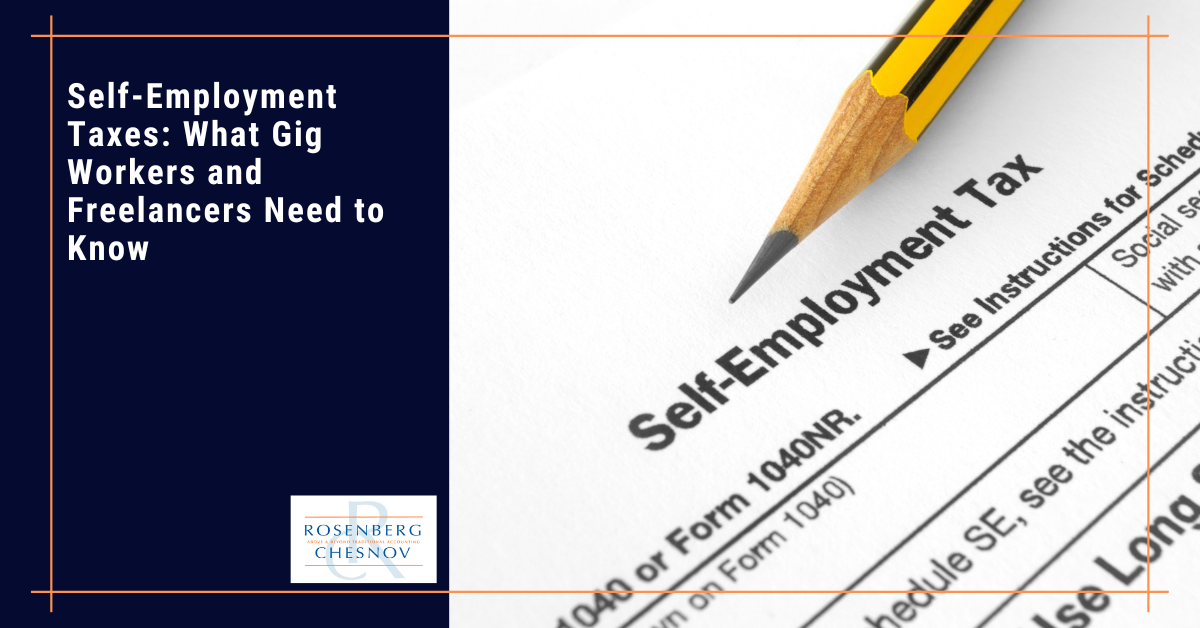What is the difference between self-employed, freelance, and gig workers?
The terms “self-employed,” “freelance,” and “gig workers” are often used interchangeably, but they do have distinct differences in their connotations and definitions:
- Self-Employed: Self-employed refers to an individual who runs their own business or works as an independent contractor. In this context, the individual is responsible for finding their own clients, managing their workload, and handling the financial aspects of their business. Self-employed individuals can work in various fields, ranging from professional services like consulting or graphic design to trades like plumbing or carpentry. They may have long-term clients, short-term projects, or a mix of both.
- Freelancer: Freelancers are a subset of self-employed workers. A freelancer is an independent professional who offers services to multiple clients on a project-to-project basis. They typically work in creative, knowledge-based, or specialized fields such as writing, graphic design, web development, photography, and marketing. Freelancers often have a specific skill set and may work with different clients simultaneously, providing their expertise to meet specific project needs.
- Gig Workers: “Gig worker” is a broader term encompassing self-employed individuals and freelancers. Gig workers are individuals who take on short-term, temporary, or on-demand work, often referred to as “gigs.” These gigs can be project-based, task-based, or service-based and may be facilitated through online platforms or apps. Gig workers can include freelancers, independent contractors, on-call workers, and those participating in the sharing economy (e.g., rideshare drivers, food delivery drivers). Gig workers may have a less predictable work schedule, and their income may come from various sources.
Do freelancers and gig workers pay self-employment tax?
Yes, both freelancers and gig workers are typically required to pay self-employment tax. Given that they are considered self-employed, they are responsible for meeting their tax obligations, including self-employment taxes.
This self-employment tax encompasses two main components: Social Security tax and Medicare tax. These taxes are shared between the employer and the employee in a regular employment relationship. But if you work for yourself, you are accountable for both parts.
On the plus side, when calculating your income tax, you can deduct 50% of the self-employment tax you pay on your earnings. This may lower your overall tax obligation. Also worth noting is that the Social Security tax applies only to a specific portion of the individual’s net earnings, and an annual cap is applicable.
How much do self-employed individuals pay in taxes?
This year, the self-employment tax rate stands at 15.3%, consisting of 12.4% for Social Security (covering old-age, survivors, and disability insurance) and 2.9% for Medicare (which supports hospital insurance).
For 2023, the initial $160,200 of your combined wages, tips, and net earnings are subject to any combination of the Social Security part of self-employment tax, Social Security tax, or railroad retirement (tier 1) tax. If you need the SE tax rates for a prior year, you can find them in the Schedule SE for that specific year.
If you opt for a tax year other than the calendar year, you must use the tax rate and maximum earnings limit that were in effect at the beginning of your tax year. Even if there are changes in the tax rate or maximum earnings limit during your tax year, you should consistently use the same rate and limit throughout that period.
All of your combined wages, tips, and net earnings for the current year are subject to any combination of the 2.9% Medicare part of the Self-Employment tax, Social Security tax, or railroad retirement (tier 1) tax.
If your wages and tips are subject to either Social Security tax or the Tier 1 part of the railroad retirement tax, or both, and they total at least $160,200, you do not need to pay the 12.4% Social Security part of the SE tax on any of your net earnings. However, you must still pay the 2.9% Medicare part of the SE tax on all your net earnings.
Keep in mind that you become liable for an additional 0.9% Medicare Tax if your wages, compensation, or self-employment income, when combined with your spouse’s income (in case you file a joint return), exceed the threshold amount for your filing status:
| Filing Status | Threshold Amount |
| Married filing jointly | $250,000 |
| Married filing separate | $125,000 |
| Single | $200,000 |
| Head of household (with qualifying person) | $200,000 |
| Qualifying surviving spouse with dependent child | $200,000 |
What are the quarterly estimated tax dates for 2023?
If you anticipate owing at least $1,000 in taxes as a self-employed individual, you must also pay anticipated taxes periodically throughout the year.
You must make these payments four times a year using Form 1040-ES.
In 2023, the quarterly estimated tax payment due dates are as follows:
- First Quarter (Q1): April 18 (Conveniently, Tax Day!)
- Second Quarter (Q2): June 15, 2023.
- Third Quarter (Q3): September 15, 2023.
- Fourth Quarter (Q4): January 16, 2024
It’s essential for self-employed individuals, freelancers, and other taxpayers with income not subject to withholding to make these quarterly estimated tax payments to ensure they meet their tax obligations throughout the year.
Missing or underpaying estimated tax payments may lead to penalties and interest charges—and even if you are entitled to a refund when you file your income tax return, failing to pay the required amount in quarterly taxes could result in a penalty.
What deductions can self-employed individuals take?
One significant advantage of being self-employed is potential access to valuable tax deductions. Here are some examples of common deductions you might consider to optimize your savings:
- Home Office: Deduct a portion of mortgage/rent, property taxes, utilities, and maintenance for your home office.
- Health Insurance: Deduct medical and dental premiums for yourself, your spouse, dependents, or children under 27.
- Continuing Education: Deduct qualifying work-related education expenses.
- Car Expenses: Deduct mileage or actual car expenses for business purposes.
- Retirement Savings: Deduct contributions to a solo 401(k) or explore IRAs.
- Self-Employment Taxes: Deduct half of self-employment tax as a business expense.
- Business Insurance: Deduct premiums for business, employee accident, and health insurance.
- Office Supplies: Deduct expenses for daily business supplies.
- Credit Card and Loan Interest: Deduct interest on business-related purchases.
- Phone and Internet Costs: Deduct the entire bill for a dedicated business line or a percentage for personal lines used for business.
- Business Travel and Meals: Deduct travel expenses for legitimate business purposes.
- Start-up Costs: Deduct up to $5,000 of business start-up and organizational costs.
- Advertising: Deduct expenses related to business advertising.
- Certain Memberships: Deduct membership fees for professional organizations.
- Qualified Business Income Deduction: Deduct a portion of business income on your taxes, depending on your total taxable income and business type.
How do freelancers prepare for retirement?
While self-employment offers flexibility, it also means there is no employer-sponsored retirement plan. As a result, gig workers and freelancers must take the initiative to plan for their retirement. Explore options like Individual Retirement Accounts (IRAs) or Simplified Employee Pension (SEP) IRAs, which offer tax advantages for self-employed individuals.
While being self-employed brings added responsibilities, it also opens the door to potential tax advantages. Whether you’re new to gig work or a seasoned freelancer, it is crucial to stay well-informed. Given the complexities of tax filing as a freelancer or gig worker, it can be beneficial to seek professional advice.
Tax experts (like us!) can help you understand your obligations, identify potential deductions, and ensure you comply with all relevant tax laws.
Would you like some help?
If you are a client and would like to book a consultation, call us at +1 (212) 382-3939 or contact us here to set up a time.
If you aren’t a client, why not? We can take care of your accounting, bookkeeping, tax, and CFO needs so that you don’t have to worry about any of them. Interested? Contact us here to set up a no-obligation consultation.
Stay informed
Interested in receiving updates in your mailbox? Check out our newsletter, full of information you can use. It comes out once every two weeks, and you can register for it below.





